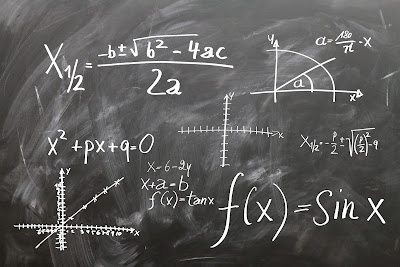Experienced calculus tutor - online and in-person. Schedule an affordable online calculus tutoring session.
Wednesday, October 26, 2016
How to solve a Math problem I
1. We need to understand the problem.
What is the unknown? What data do we know? What is the condition?
Can the condition be satisfied? Is the condition sufficient to determine the unknown? Or is it insufficient? Or redundant? Or a contradiction?
Let's make a drawing. Let's introduce corresponding notations. Let's separate the different parts of the condition. Can we write them in a mathematical language?
2. Let's make a plan.
Let's find the relation between the data we know and the unknown.
Did we met this problem before? Or maybe we had to do with it in the past, but somehow in a different way?
It's not excluded to be put in the situation of considering auxiliary problems if we are not able to find a direct relation. Do we know a related problem?
Do we know a theorem which can be used here in our problem?
Let's investigate the unknown! And let's think of a known problem which has the same unknown or a similar one.
Eventually, we should get a plan of the solution. Let's say we have a related problem with ours and which was solved before. Can we use it? Can we use its result? Can we use somehow its method of finding the solution to our problem? Can we not introduce an auxiliary element for making it usable? Can we reformulate the problem? Can we reformulate it in another way? Let's go back to the definitions now. If we can't solve the proposed problem, we try first to solve a related problem. Can we imagine a related problem that is more accessible? A more general problem? A more particular problem? An analogue problem? Do we know to solve a part of the problem? Let's keep a part of the problem, omitting the rest. To what extent can be determined now the unknown, how can it vary more? Can we deduce something useful from the data of the problem? Can we imagine some other data which is proper for finding the unknown? Can we change the unknown or the data, or both of them, if it's the case, so that the new unknown to be more related to our new data?
All data had been used? The entire condition had been used? Was it taken into account all the essential notions involved in the problem?
3. Let's make the plan.
When we make the plan of the solution, we verify each step. Can we realize very clear that the step is correct? Can we prove that is correct?
4. Let's analyze the result obtained.
Can we verify the result? Can we verify the argumentation? Can we get the result in a different way? Can we realize this just if we take a look at the problem? Can we use the result or the method in another new problem?
If we apply these steps to every problem we need to solve we will not fail for sure. I know this from my experience and we need to think also if we can find more than one solution to a proposed problem. Thank you
Subscribe to:
Post Comments (Atom)

No comments:
Post a Comment